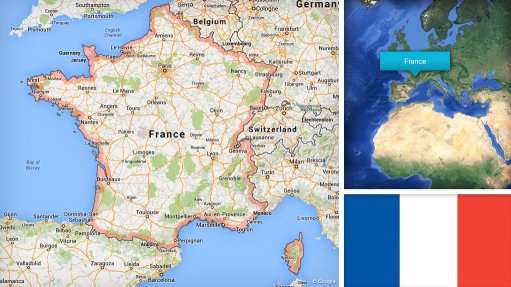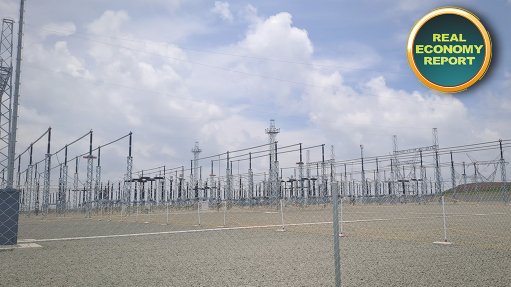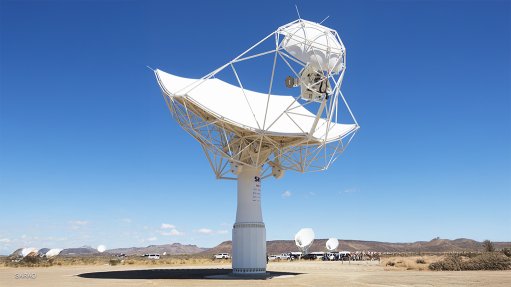R300bn-a-year climate change war chest could electrify all of Africa
The joke goes like this: a Frenchman and a German meet in a bar just after the end of the Second World War. Initially a bit wary, they start talking after a while. They have both just been discharged from their respective armies. They discuss what they are going to do when they get home.
“Oh,” says the Frenchman, “I am going to go to the top of the Eiffel Tower and look over the whole of Paris.” The German nods and then says: “I’m going to stand on a soapbox and look over the whole of Berlin.”
Germany was bombed flat in the Second World War. After the war, the Americans produced a plan, called the Marshall Plan, which was designed to rebuild Europe. From Wikipedia: “The Marshall Plan (officially the European Recovery Programme, or ERP) was an American initiative to aid Western Europe, in which the US gave over $12-billion (about $120-billion in current dollar value) in economic support to help rebuild Western European economies after the end of World War II. The plan was in operation for four years.”
Over the past ten years, I have visited a number of African countries, including Kenya, Mali, Zambia, the Republic of Congo and Swaziland. None of them is improving in any big way. All over the continent, one sees the dichotomy: there are tourist lodges that have electricity and running water and these are located next to villages that have neither. At the mining camps, there is cooked food, air conditioning and all sorts of amenities, while the people in the villages (too often about to be displaced by the mine itself from land on which they have lived all their lives) have nothing.
Medical facilities are poor – and somebody once put it thus: “On a continent where the first heart transplant was performed, children die of measles.” The biggest killers in rural Africa are malaria, meningitis, encephalitis, cholera, diphtheria, pneumonia, septicaemia, Aids and attacks by hippopotamus. None of these rates as a killer in cities like Cape Town, Johannesburg or London.
African people are in a hole out of which it is difficult to climb. Almost 95% of those living without electricity are in countries in sub-Saharan Africa. Unless these people are supplied with electricity, they are never going to move up in the world. The primary reason for denying people electricity is that they cannot afford to pay for it. Yet a whole world concerned about climate change spent about $300-billion last year trying to stop it.
One does not have to struggle too much to see where this is going: if we created an African version of the Marshall Plan and paid the $300-billion on electricity supply to rural people, it would have the dual effect of uplifting them and greatly reducing the hundreds and tons of greenhouse gases currently produced by people burning kerosene and candles.
Further, if you can provide a light (such as a solar light) that eliminates dependence on kerosene and candles, effectively, you hand out to every rural family an income of $2 a month. It is true that once an electricity system is installed, it has to be maintained and that maintenance is funded from electricity sales. The idea is not to give everybody in rural Africa free electricity forever; it is to provide them with free electricity so that they can move up and become more productive.
One does not have to be a genius to realise that a 1 kW irrigation pump, the Zambezi river and a large bumper crop of chillies is a recipe for success, provided you have 1 kW worth of electricity. After the Second World War, the US realised that a destroyed Europe was economically bad for the entire world. So, the Americans put money down and changed things. This is possible in Africa. However, what is not possible is for anybody to give any African government any form of aid and expect that it will do any better than line the government pockets. What we need is an independent electricity installer and supervisor. If $120- billion could rebuild Europe, $300-billion can definitely electrify rural Africa.
Article Enquiry
Email Article
Save Article
Feedback
To advertise email advertising@creamermedia.co.za or click here
Comments
Press Office
Announcements
What's On
Subscribe to improve your user experience...
Option 1 (equivalent of R125 a month):
Receive a weekly copy of Creamer Media's Engineering News & Mining Weekly magazine
(print copy for those in South Africa and e-magazine for those outside of South Africa)
Receive daily email newsletters
Access to full search results
Access archive of magazine back copies
Access to Projects in Progress
Access to ONE Research Report of your choice in PDF format
Option 2 (equivalent of R375 a month):
All benefits from Option 1
PLUS
Access to Creamer Media's Research Channel Africa for ALL Research Reports, in PDF format, on various industrial and mining sectors
including Electricity; Water; Energy Transition; Hydrogen; Roads, Rail and Ports; Coal; Gold; Platinum; Battery Metals; etc.
Already a subscriber?
Forgotten your password?
Receive weekly copy of Creamer Media's Engineering News & Mining Weekly magazine (print copy for those in South Africa and e-magazine for those outside of South Africa)
➕
Recieve daily email newsletters
➕
Access to full search results
➕
Access archive of magazine back copies
➕
Access to Projects in Progress
➕
Access to ONE Research Report of your choice in PDF format
RESEARCH CHANNEL AFRICA
R4500 (equivalent of R375 a month)
SUBSCRIBEAll benefits from Option 1
➕
Access to Creamer Media's Research Channel Africa for ALL Research Reports on various industrial and mining sectors, in PDF format, including on:
Electricity
➕
Water
➕
Energy Transition
➕
Hydrogen
➕
Roads, Rail and Ports
➕
Coal
➕
Gold
➕
Platinum
➕
Battery Metals
➕
etc.
Receive all benefits from Option 1 or Option 2 delivered to numerous people at your company
➕
Multiple User names and Passwords for simultaneous log-ins
➕
Intranet integration access to all in your organisation

















